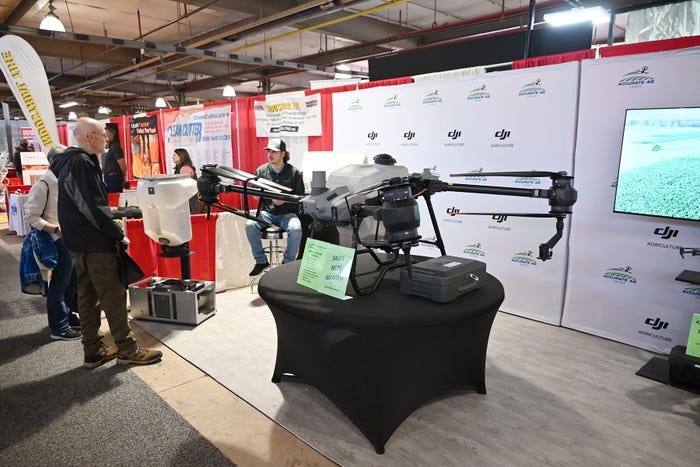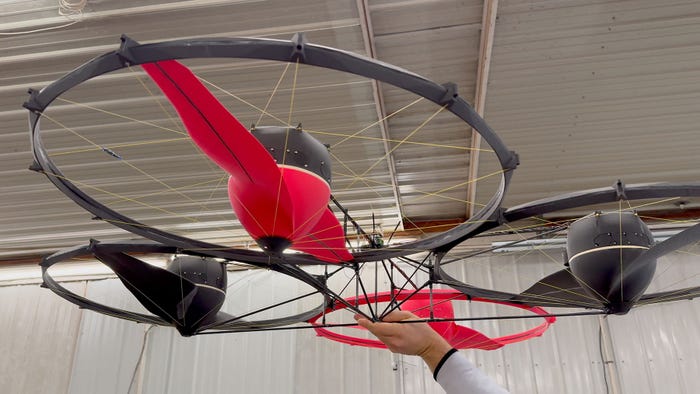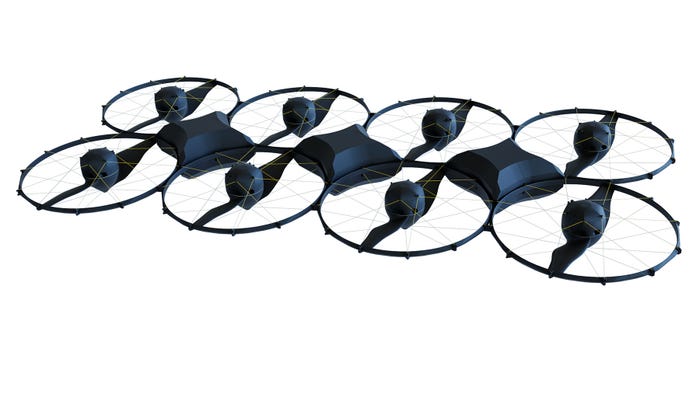
It was a scene that repeated itself across three days at New York Farm Show: dozens of people crowding around Lamar Witmer’s booth to check out his Hylio drone.
Children, phones in hand, took pictures of it. Adults peppered Witmer with questions on how a drone flies and what it can be used for.
Drones aren’t exactly brand-new technology. But they still draw crowds at farm shows, and they are starting to catch on with farmers.
“This really fits well for a fungicide treatment of corn at tassel time where it’s very difficult to stay in between the rows with any machine, even if you have the clearance. Here, you don’t drag any corn down, and it fits really well,” says Witmer, owner of Auburn Ag Products in Auburn, N.Y.
Daniel Kiss and Kenny Strong of Accurate Ag Drones in Smithsburg, Md., also had a steady flow of visitors to their booth, eager to see their DJI Agras T40. Kiss says many producers tell him drones are a much more affordable option for spraying and seeding.
“It’s a lot more versatile as well,” Kiss says. “With a dry spreader tank for broadcasting, you can do cover crop seeding, you can do granular fertilizer, granular herbicide. Then you spray any liquid application through it, so all your fungicides on corn and beans, spray over pumpkins, you can do it without leaving tracks. That’s a huge problem, leaving tracks and the yield loss that you actually get from running a tractor or a spray rig through your field.”

BIGGER THAN EVER: Daniel Kiss of Accurate Ag Drones in Smithsburg, Md., talks to a visitor about the DJI Agras T40, which can carry a spray load of 40 kilograms. Kiss says many producers tell him drones are a much more affordable option for spraying and seeding.
But as “cool” as drones look, the question remains, are they a viable option for your farm? That depends on what you want to do, says Sean Falconer, managing director of Volatus Drones in Syracuse, N.Y. He sells the idea of drones as part of a “smart farming system” where prescription maps and NDVI (normalized difference vegetation index) maps get plugged into a drone that then goes out and does precision spraying.
Drone use on farms runs the gamut, he says, from basic field scouting with smaller drones to much bigger spraying machines that cost tens of thousands of dollars. The DJI Agras T40 that he brought to the show costs more than $20,000.
“But producers are looking to optimize their operation. And if they have to spend a few thousand dollars to save hundreds of thousands of dollars, they’ll do it,” Falconer says, adding that drone capabilities have grown by leaps and bounds.
Tanks that could hold just a few gallons of material now hold more than 10 gallons. Operating systems are more advanced and user-friendly, and camera resolution is more precise.
“You can spot a deer in the woods from 200 feet up, 750 feet away, like that. It’s come a long way,” Falconer says.
Getting legal
But buying a drone and being able to use it legally are two different things. For example, it took Witmer and his son, Michael, two years before they were able to get the certifications to apply pesticides using a drone. They now have their certificate, and this season will be the first time they will use their drone for spraying.
Why did it take so long? Paperwork, Lamar Witmer says, and a long, drawn-out process that forced producers to get the same certifications as crop-dusting pilots.
There may be some relief in store. Last summer, the FAA announced that it was streamlining the rules for ag producers interested in getting their Part 137 UAS certificate, the federal rule that covers drones for agricultural use.

QUAD COPTER: Modovolo, a startup based in Rome, N.Y., has designed a prototype that Justin Call, CEO of the company, claims is 50% lighter than existing drones and is much cheaper to make. It has four electric-motor lift pods that lift the drone off the ground with a utility pod attached to the bottom. (Photo courtesy of Justin Call)
Once a producer gets their certificate, they can then apply for exemptions from rules that cover the operation of crop-dusting planes and other larger aircraft. Exemptions vary by size of drone, with 55 pounds — over or under — being the cutoff from certain exemptions.
But Falconer says the certification process is still too arduous and one that scares producers from purchasing a machine. His company has come up with a solution: Allow farm operators to lease a drone and operate under the company’s registration and certificates.
“The farmer does the work, but the fed side, the regulations, are covered because that’s the biggest friction still, right now,” he says. “The farmers come in and they want to buy, and then we tell them what the regulations are and they’re like, ‘I can’t do that.’ You’re flying under our federal regulatory guidance, and we provide the training to certify them to work under our fed guidance. The farmer leases the drone.”
Thirsty for power
Regulations notwithstanding, drones still have a drawback: lack of battery power. The DJI Agras T40, for example, is rated to fly for only seven minutes with a full payload of spraying, or just six minutes for spreading. Batteries, according to the company, take between nine and 12 minutes to charge.
Justin Call, CEO of Modovolo, a startup based in Rome, N.Y., has had a drone in development for two-and-a-half years. He says current drones are too heavy, inefficient and expensive.
After developing 43 prototypes, Call says his company finalized a design that he claims is 50% lighter than existing drones and is much cheaper to make. Picture four electric-motor lift pods that lift the drone off the ground with a utility pod attached to the bottom.
The idea is that a producer could then attach more pods to accommodate heavier payloads. The big difference, he says, is the drone can fly for up to two hours powered by lithium ion batteries that he describes as like C or D batteries that can be purchased in a store.
“So, you can buy a number of lift pods and utility pods … and if I need to just do a photoshoot all day, I’m just going to click four [lift pods] together with just one utility pod, because that’s all I need,” Call says. “Or if I have a heavier payload, then I’m just going to click two more lift pods and a bigger utility pod, and that’s going to give me twice the payload as the other one.”

PLUG AND PLAY: Future designs of Modovolo’s drone would allow owners to attach more pods to accommodate heavier payloads. The company claims the drone can fly up to two hours powered by lithium ion batteries. (Photo courtesy of Justin Call)
The company is taking preorders for its initial quad copter design, which can lift 5 pounds. It will cost about $6,000, and Call says the goal is to roll out the first 200 drones by this time next year. Additional attachments are not for sale yet.
Call says the initial drone is not suitable for spraying or seeding.
But it has gotten attention from some companies. DropCopter of Syracuse, N.Y., which specializes in using drones for aerial pollination of orchards, is working with Modovolo on a design for their business.
“We are very interested in what they are working on. It would significantly help us scale and be able to treat many, many more acres per day,” writes Matt Koball, founder and CEO of DropCopter.
While it may take a few years for battery technology to catch up with larger drones, operators such as Lamar Witmer are confident future generations of these machines will get more efficient and become a mainstay on farms.
“We see this as a way of the future for certain applications. It is definitely the way to go, even with this size,” he says, pointing to his drone’s 8-gallon tank. “And in two years’ time, they now have one that’s 18 gallons, and they are working on a 26-gallon. So, we’re confident they’ll get better.”
Read more about:
DronesAbout the Author(s)
You May Also Like






